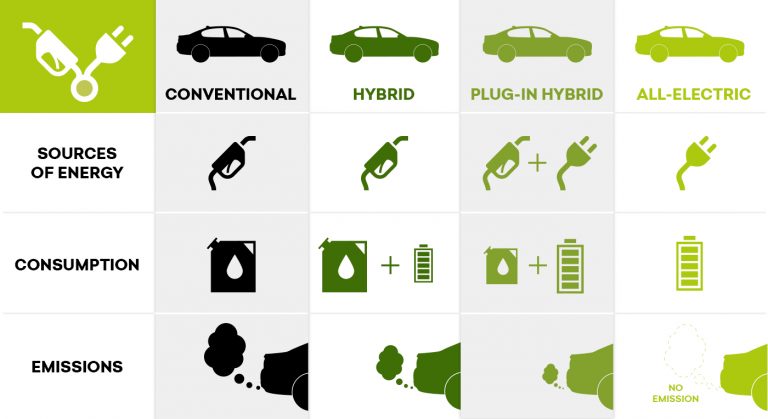Electric Vehicle 101
What is an EV?
Electric vehicles are powered by a battery motor that pulls energy from electrical generators, solar panels, or fuel cells rather than an internal combustion engine. The first successful electric vehicle was created sometime in the mid-19th century, dating their history just as far back as traditional cars. Although petroleum-powered vehicles have dominated the transportation sector for the past century, we are starting to see a rapid increase of electric motors in cars, motorcycles, trains, and heavy-duty trucks due to lack of emissions, domestic production, and ease of maintenance. In the early 2000s, EV adoption incentives began taking effect throughout the United States to reduce air pollution and expand consumer interest. Many incentives include tax rebates, utility abatement, and charging installment grants. As research continues and technology advances, electric vehicles are seeing improved batteries and longer ranges making them a standard choice in vehicle. There are several types of electric vehicles on the road today.
Types of EVs

- All-Electric Vehicles (AEVs) also known as Battery Electric Vehicles (BEVs) have a fully electric motor and engine instead of an internal combustion engine. These types of EVs run completely on electricity and produce zero emissions.
- Plug-In Hybrid Vehicles (PHEV) have an electric battery, an electric motor AND a gas-powered combustion engine. When the vehicle has depleted its electric battery, it automatically starts pulling power from gasoline.
- Hybrid Vehicles (HEV) have a small electric battery AND an internal combustion engine. In HEVs, the electric motor assists the combustion engine, while in PHEVs, it is the other way around. HEVs cannot be plugged in and still require frequent trips to the gas station.
